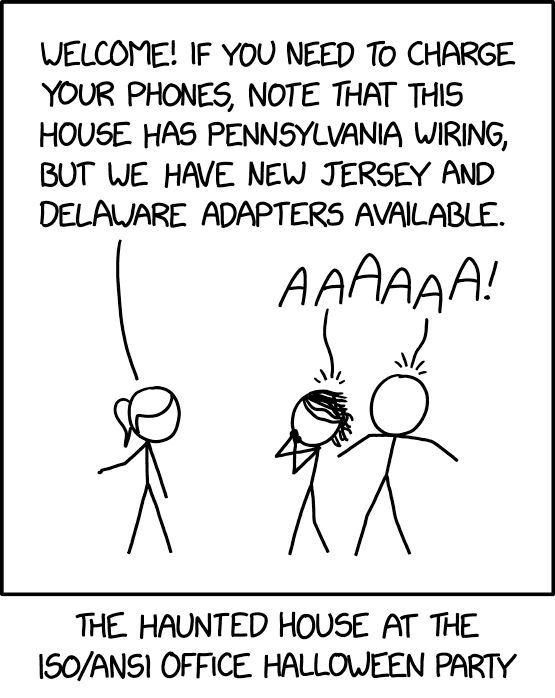We did it not because it was easy, but because we thought it would be easy.
- 9 Posts
- 286 Comments
I switched to Immich recently and am very happy.
- Immich’s face detection is much better, very rarely fails. Especially for non-white faces. But even for white faces PhotoPrisim regularly needed me reviewing the unmatched faces. I also needed to really turn up the “what is a face” threshold because otherwise it would miss a ton of clear faces. (Then it only missed some, but also has tons of false positives). On the other hand Immich just works.
- Immich’s UI is much nicer overall. Lots of small affordances. For example the menu item to “view in timeline” is worth switching alone. Also good riddance to PhotoPrism’s persistent and buggy selection. Someone must have worked really hard on implementing this but it was really just a bad idea.
- Immich has an app with uploading, and it allows you to view local and uploaded photos in one interface which is a huge UX win. I couldn’t find a good Android app for uploading to photoprism. You could set up import delays and stuff but you would still regularly get partially uploaded files imported and have to clean it up manually.
- Immich’s search by content is much better. For example searching for “cat with red and yellow ball” was useless on PhotoPrism, but I found tons of the results I was looking for on Immich.
The bad:
- There is currently a terrible jank in the Immich app which makes videos unusable and everything painful. Apparently this is due to some Album sync process running in the main thread. They are working on it. I can’t fathom how a few hundred albums causes this much lag but 🤷 There is also even worse lag on the location view page, but at least that is just one page.
- The Immich app has a lot less features than the website. But the website works very well on mobile so even just using the website (and the app for uploading) is better than PhotoPrism here. The fundamentals are good but it just needs more work.
- I liked PhotoPrism’s advanced filters. They were very limited but at least they were there.
- Not being able to sort search results by date is a huge usability issue. I often know roughly when the photo I want to find was taken and being able to order by date would be hugely helpful.
- You have to eagerly transcode all videos. There is no way to clean up old transcodes and re-transcode on the fly. To be fair the PhotoPrism story also wasn’t great because you had to wait for the full video to be transcoded before starting, leading to a huge delay for videos more than a few seconds, but at least I could save a few hundred gigs of disk space.
Honestly a lot of stuff in PhotoPrism feels like one developer has a weird workflow and they optimized it for that. Most of them are counter to what I actually want to do (like automatic title and description generation, or the review stuff, or auto quality rating). Immich is very clearly inspired by Google Photos and takes a lot of things directly from it, but that matches my use case way better. (I was pretty happy with Google Photos until they started refusing to give access to the originals.)
Most Intel GPUs are great at transcoding. Reliable, widely supported and quite a bit of transcoding power for very little electrical power.
I think the main thing I would check is what formats are supported. If the other GPU can support newer formats like AV1 it may be worth it (if you want to store your videos in these more efficient formats or you have clients who can consume these formats and will appreciate the reduced bandwidth).
But overall I would say if you aren’t having any problems no need to bother. The onboard graphics are simple and efficient.
is framework agnostic
But it isn’t, because they depend on framer-motion and React. JSX is, but the icons aren’t.
You can trivially provide on-hover animations using CSS in SVG then your icons are framework agnostic. Not to mention smaller to download and more efficient to execute.

 2·13 days ago
2·13 days agoThere are three parts to the whole push system.
- A push protocol. You get a URL and post a message to it. That message is E2EE and gets delivered to the application.
- A way to acquire that URL.
- A way to respond to those notifications.
My point is that 1 is the core and already available across devices including over Google’s push notification system and making custom push servers is very easy. It would make sense to keep that interface, but provide alternatives to 2 and 3. This way browsers can use the JS API for 2 and 3, but other apps can use a different API. The push server and the app server can remain identical across browsers, apps and anything else. This provides compatibility with the currently reigning system, the ability to provide tiny shims for people who don’t want to self host and still maintains the option to fully self host as desired.

 1·14 days ago
1·14 days agoI don’t want the end executable to have to bundle these files and re-parse them each time it gets run.
No matter how you persist data you will need to re-parse it. The question is really just if the new format is more efficient to read than the old format. Some formats such as FlatBuffers and Cap'n Proto are designed to have very efficient loading processes.
(Well technically you could persist the process image to disk, but this tends to be much larger than serialized data would be and has issues such as defeating ASLR. This is very rarely done.)
Lots of people are talking about Pickle. But it isn’t particularly fast. That being side with Python you can’t expect much to start with.
Must be because Factorio released 2.0 and the Space Age DLC recently.

 2·14 days ago
2·14 days agoIMHO UnifiedPush is just a poor re-implementation of WebPush which is an open and distributed standard that supports (and in the browser requires, so support is universal) E2EE.
UnifiedPush would be better as a framework for WebPush providers and a client API. But use the same protocol and backends as WebPush (as how to get a WebPush endpoint is defined as a JS API in browsers, would would need to be adapted).
Why are these TypeScript + JSX rather than just SVGs? It seems that the paths are defined as SVG but they are using some JavaScript framework to define the animations rather than just using SVG or CSS animations.

 9·14 days ago
9·14 days agoWhy WASM? It seems to me that the attack surface of WASM is negligible compared to JavaScript (and IIUC disabling JavaScript will also disable WASM).
Third-party frames is definitely a good way to reduce your attack surface though. Ad embeds are often used to distribute exploits.
A few hundred a month is just a few per day. That is pretty low volume by most standards.
I would say in general if the SMTP server could be replaced by a single human writing and mailing snail-mail letters by hand it qualifies as low volume.
Ah ok. You aren’t doing auth. I don’t understand how this is relevant.
Are you doing auth in the reverse proxy for Jellyfin? Do you use Chromecast or any non-web interface? If so I’m very interested how you got it to work.
The concern is that it would be nice if the UNIX users and LDAP is automatically in sync and managed from a version controlled source. I guess the answer is just build up a static LDAP database from my existing configs. It would be nice to have one authoritative system on the server but I guess as long as they are both built from one source of truth it shouldn’t be an issue.
Yes, LDAP is a general tool. But many applications that I am interested in using it for user information. That is what I want to use it for. I’m not really interested in storing other data.
I think you are sort of missing the goal of the question. I have a bunch of self-hosted services like Jellyfin, qBittorrent, PhotoPrism, Metabase … I want to avoid having to configure users in each one individually. I am considering LDAP because it is supported by many of these services. I’m not concerned about synchronizing UNIX users, I already have that solved. (If I need to move those to LDAP as well that can be considered, but isn’t a goal).
I do use a reverse proxy but for various reasons you can’t just block off some apps. For example if you want to play Jellyfin on a Chromecast or similar, or PhotoPrism if you want to use sharing links. Unfortunately these systems are designed around the built-in auth and you can’t just slap a proxy in front.
I do use nginx with basic with in front of services where I can. I trust nginx much more than 10 different services with varying quality levels. But unfortunately not all services play well.
How are you configuring this? I checked for Jellyfin and their are third-party plugins which don’t look too mature, but none of them seem to work with apps. qBittorrent doesn’t support much (actually I may be able to put reverse-proxy auth in front… I’ll look into that) and Metabase locks SSO behind a premium subscription.
IDK why but it does seem that LDAP is much more widely supported. Or am I missing some method to make it work
But the problem is that most self-hosted apps don’t integrate well with these. For example qBittorrent, Jellyfin, Metabase and many other common self-hosted apps.
NixOS makes it very easy to declaratively configure servers. For example the users config to manage UNIX users: https://nixos.org/manual/nixos/stable/options#opt-users.users









It honestly sounds more like someone convincing you that crypto is great than someone convincing you that Greenpeace is great.